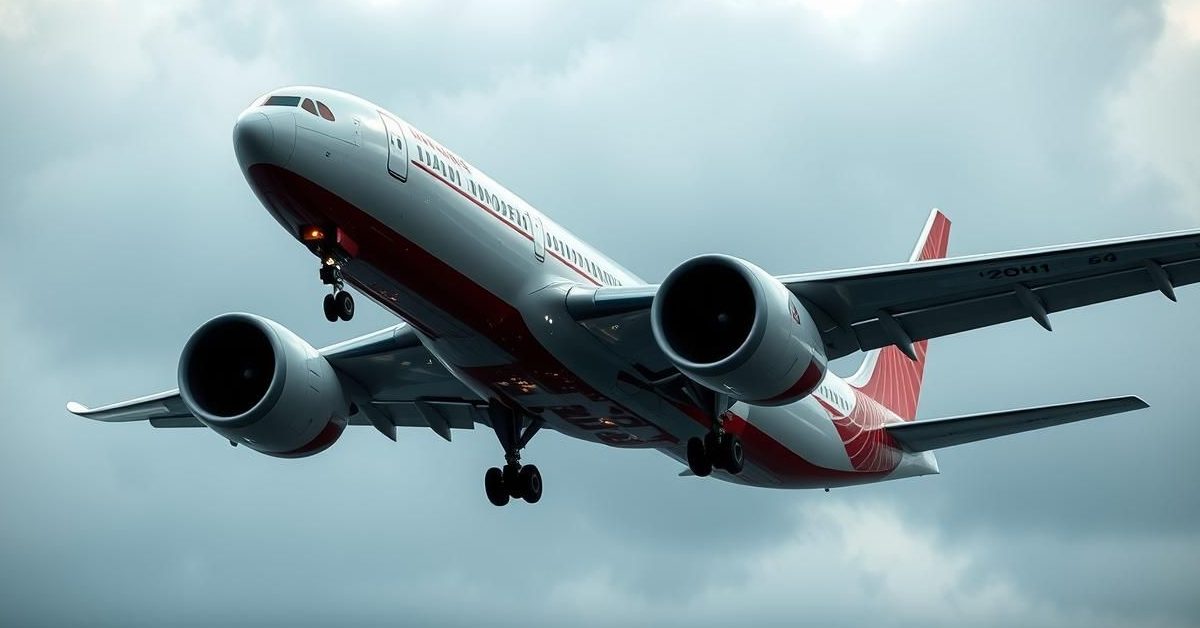The investigation into the tragic Air India flight AI 171 crash, which claimed 260 lives, is now focusing on the aircraft’s engine fuel control switches, according to a preliminary report.
A Disaster Unfolds After Take-off
On June 12, Air India flight AI 171, a Boeing 787-8 en route from Ahmedabad to London Gatwick, crashed shortly after lift-off. This horrific incident resulted in the deaths of 241 passengers and one crew member on board, along with 19 people on the ground, making it the deadliest aviation disaster involving an Indian airline in four decades.
The Aircraft Accident Investigation Bureau (AAIB) released an initial report, highlighting a critical finding. Moments after the plane became airborne, both engine fuel control switches transitioned from the ‘RUN’ to the ‘CUTOFF’ position within a single second.
The Heart of the Investigation: Fuel Switches
The preliminary probe revealed a puzzling exchange recorded on the cockpit voice recorder (CVR). One pilot was heard asking the other why the fuel was cut off, to which the other pilot insisted they had not done so.
At the time of the incident, co-pilot Clive Kundar was flying the aircraft, while pilot-in-command Sumeet Sabharwal was monitoring. Both pilots were highly experienced, with Sabharwal boasting nearly 8,600 hours on the Boeing 787 and Kundar over 1,100 hours.
Investigators are now meticulously examining data from the flight data recorders (FDR) and CVR. They aim to pinpoint the exact timing of the fuel switch movements and understand the reasons behind their transition to the cutoff position.
Understanding Fuel Control Switches
Fuel control switches are vital components that regulate the flow of fuel to an aircraft’s engines. Pilots and experts emphasize that moving these switches requires deliberate action, making accidental operation extremely difficult.
These switches are designed with protective features, including brackets on either side and a stop-lock mechanism. To move a switch from ‘RUN’ to ‘CUTOFF’ (or vice versa), pilots must first lift it before sliding it into the desired position.
Typically, these switches are only operated on the ground: to start the engines before departure and to shut them down after landing. Their movement during flight is reserved for specific emergencies, such as an engine failure or severe damage requiring a fuel cut-off for flight safety.
When Are Fuel Switches Moved Mid-Flight?
Pilots would only move a fuel control switch while airborne in the event of an engine failure, a major performance issue, or significant damage to an engine. This action is taken to shut down the problematic engine, immediately cutting off its fuel supply and resulting in an instant loss of thrust.
It’s crucial to note that such an action usually involves only one engine’s fuel switch, not both. Modern twin-engine aircraft are designed to operate safely for extended periods on a single functional engine.
While speculative theories about the AI 171 crash have included the possibility of misidentifying a problematic engine and shutting down a working one, there is no official information to substantiate this. Engine shutdown procedures in flight are highly methodical, involve checklists, and are typically performed by both pilots after reaching a safe altitude. However, rare instances of mistaken engine shutdowns have occurred in aviation history.
- The Air India AI 171 crash killed 260 people after both engine fuel control switches moved to ‘CUTOFF’ shortly after take-off.
- Cockpit voice recordings show one pilot denying cutting off fuel when asked by the other.
- Fuel control switches are designed for deliberate operation and are rarely moved during flight, except in engine emergencies.
- Investigators are analyzing flight data and voice recorders to determine the cause of the switch movements.
The ongoing investigation aims to provide answers to this tragic incident, ensuring lessons are learned to enhance aviation safety for the future.














